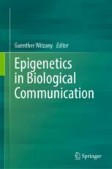Search
Search Results
-
Integration of large and diverse angiosperm DNA fragments into Asian Gnetum mitogenomes
BackgroundHorizontal gene transfer (HGT) events have rarely been reported in gymnosperms. Gnetum is a gymnosperm genus comprising 25‒35 species...

-
GC heterogeneity reveals sequence-structures evolution of angiosperm ITS2
BackgroundDespite GC variation constitutes a fundamental element of genome and species diversity, the precise mechanisms driving it remain unclear....

-
Dynamic changes in the plastid and mitochondrial genomes of the angiosperm Corydalis pauciovulata (Papaveraceae)
BackgroundCorydalis DC., the largest genus in the family Papaveraceae, comprises > 465 species. Complete plastid genomes (plastomes) of Corydalis sho...

-
Mfind: a tool for DNA barcode analysis in angiosperms and its relationship with microsatellites using a sliding window algorithm
Main conclusionMfind is a tool to analyze the impact of microsatellite presence on DNA barcode specificity. We found a significant correlation...

-
Context-Dependent Mutation Dynamics, Not Selection, Explains the Codon Usage Bias of Most Angiosperm Chloroplast Genes
Two competing proposals about the degree to which selection affects codon usage of angiosperm chloroplast genes are examined. The first, based on...

-
Gene identification and tissue expression analysis inform the floral organization and color in the basal angiosperm Magnolia polytepala (Magnoliaceae)
Main conclusionIn Magnolia polytepala , the formation of floral organization and color was attributed to tissue-dependent differential expression...

-
De novo transcriptome assembly for the basal angiosperm Illicium anisatum provides insights into the biosynthesis of shikimate and neurotoxin anisatin
Illicium anisatum , an ancient angiosperm belonging to the ANITA grade, contains abundant plant metabolites with antimicrobial activity, including...

-
The Use of Ribosomal DNA for Comparative Cytogenetics
Fluorescence in situ hybridization (FISH) with ribosomal DNA (rDNA) sequences provides excellent chromosome markers for comparative cytogenetic...
-
Evolution and Diversity of DNA Methylation in Eukaryotes
DNA methylation (DNAm) is an important and well characterized epigenetic process which regulates gene expression, plays a vital role in embryonic...
-
Insights into angiosperm evolution, floral development and chemical biosynthesis from the Aristolochia fimbriata genome
Aristolochia , a genus in the magnoliid order Piperales, has been famous for centuries for its highly specialized flowers and wide medicinal...

-
Reciprocal expression of MADS-box genes and DNA methylation reconfiguration initiate bisexual cones in spruce
The naturally occurring bisexual cone of gymnosperms has long been considered a possible intermediate stage in the origin of flowers, but the...

-
The Plant DNA C-Values Database: A One-Stop Shop for Plant Genome Size Data
Genome size is a plant character with far-reaching implications, ranging from impacts on the financial and computing feasibility of sequencing and...
-
Species Identification through DNA Barcoding and Its Applications: A Review
AbstractSpecies identification is a critical aspect of biological research, with applications in fields such as ecology, microbiology, and...
-
DNA Barcoding for the Substantiation of Herbal Products
The global use of medicinal plant products has increased dramatically in the last two decades as a result of their purported health benefits. This...
-
Correlation Analysis Reveals an Important Role of GC Content in Accumulation of Deletion Mutations in the Coding Region of Angiosperm Plastomes
Variation in GC content is assumed to correlate with various processes, including mutation biases, recombination, and environmental parameters. To...

-
Characterization of the DNA accessibility of chloroplast genomes in grasses
Although the chloroplast genome (cpDNA) of higher plants is known to exist as a large protein-DNA complex called ‘plastid nucleoid’, researches on...

-
CTAB or SDS-Based Isolation of Plant’s DNA
Unlike the animal cell, DNA extraction from plant cells faces challenges of a rigid cellulose cell wall and the presence of a variety of cytoplasmic...
-
DNA-free high-quality RNA extraction from 39 difficult-to-extract plant species (representing seasonal tissues and tissue types) of 32 families, and its validation for downstream molecular applications
BackgroundHigh-purity RNA serves as the basic requirement for downstream molecular analysis of plant species, especially the differential expression...

-
Molecular identification of DNA barcoding of Leguminous toxic species and quantitative analysis by ELISA kits
Some edible Leguminous are toxic when raw, and the Chinese are particularly fond of beans, so Leguminous poisoning is very common in China. Rapid and...

-
RETINOBLASTOMA-RELATED interactions with key factors of the RNA-directed DNA methylation (RdDM) pathway and its influence on root development
Main ConclusionOur study presents evidence for a novel mechanism for RBR function in transcriptional gene silencing by interacting with key players...

